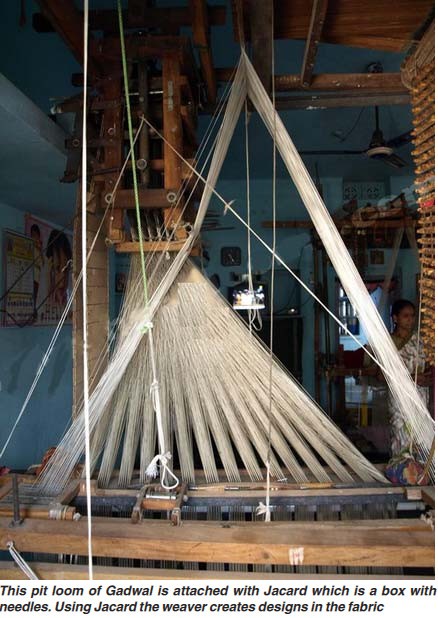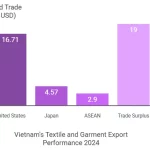Pochampalli, Dharmavaram, Guntur, Mangalagiri, Chirala, Kuppadam, Uppada and Gadwal – these are the names that bombard you at the National Handloom Expo that was held at Swaraj Maidan in Vijaywada. For a person who does not know about the rich textile tradition of Andhra Pradesh these are just names of places.
For those who want to learn about the tradition and technique used by weavers of these places in producing one of the finest textiles, the Theme Pavilion at Expo offered a wonderful chance. Tthe ‘theme pavilion’ was established by the Vijayawada Weavers’ Service Centre (WSC).
Besides live demonstration of the backbreaking Uppada Jamadani weaving technique, Tie and Dye Jamadani and Kalamkari block printing, the WSC had put on display several traditional and experimental samples of saris, dress materials, bed spreads that have been neatly labelled which is education by themselves.
The WSC Technical Supervisor B. Govardhana Rao explaining about the speciality of the sarees on display said that they were woven at the Vijayawada WSC combining the weaving techniques used by weavers from different places.
“This saree was woven using the technique used in Gadwal, but the border was woven using the technique of Kuppadam (East Godavari) Weavers,” Mr. Rao said citing an example. Explaining the efforts that go into a the weaving of a Gadwal sari, he said that the weaver had to make three knots using yarn of different colour in a weft to create the saree and borders (top and bottom).
 In the sarees developed and designed in the WSC were silk and cotton ones dyed with vegetable dyes and made using tie and dye technique. Uppada Sareethat look the same on both sides, Gunturu Butta saris with Gadwal borders and Kalamkari bed spreads printed experimentally using stencils instead of the traditional carved wooden blocks are available at the pavilion for the connoisseurs.
In the sarees developed and designed in the WSC were silk and cotton ones dyed with vegetable dyes and made using tie and dye technique. Uppada Sareethat look the same on both sides, Gunturu Butta saris with Gadwal borders and Kalamkari bed spreads printed experimentally using stencils instead of the traditional carved wooden blocks are available at the pavilion for the connoisseurs.
Interesting among the saris on display were the “Gollabhama” sari of Janagam, and the Ganga Jamuna sari with double coloured border of Dharmavaram.
The Chirala Telia Rumal bed spreads that are becoming very popular are made using tie and dye weaving techniques that are over 150-year-old.
“This technique of weaving was very popular a hundred years ago. The technique became very popular in Gujarat and from there it came back to the state and became popular in Pochampalli,” he said giving a little bit of history.
Also on display in the pavilion were sample saris from Tamil Nadu (TN) & Karnataka. Saris woven in the authentic tradition used in Kanchivaram, Kumbakkonam of TN, Mulkaimur of Karnataka and Sambalpur of Orissa are an education.





